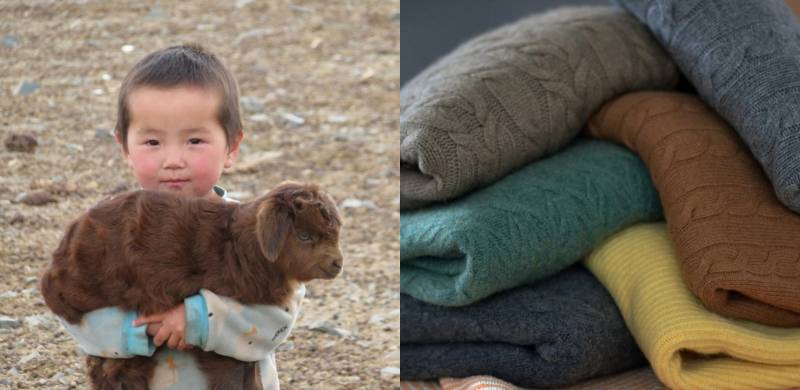
Almost everyone understands the hype behind cashmere knitwear, and knows it to be a sign of decadence and luxury. But few truly realise the amount of labor and hardwork that goes into making a single cashmere sweater. Generally agreed upon as an expensive and luxurious knitwear product, the actual cost of a cashmere sweater is much higher than what fashion retailers are charging us.
A Twitter thread by journalist Derek Guy has been making the rounds as it explores what really goes into the production of cashmere, and how it might be costing us more than we like.
To begin with, cashmere is taken from cashmere goats, unlike wool which is taken from sheep. These cashmere goats are only found in Mongolia, China and Afghanistan, which makes them scarce to begin with. When it comes to yield, a regular sheep produces 2-3 kg of wool, whereas a cashmere goat only produces 200g. For a single sweater, the yield of 5-10 goats might be needed.
https://twitter.com/dieworkwear/status/1597339390681882624
Furthermore, the variation in price of a cashmere sweater, which ranges anywhere from $50 to $5,000 is explained by the fact that cashmere production has significantly increased due to an increased demand. In 1991, it was estimated that there were 5.2 million goats in Mongolia; in 2004, it was 25.8 million. This has also led to the problem of overgrazing, and other forms of environmental pollution in the region. The animals themselves are suffering, as there are more goats than available food resources.
https://twitter.com/dieworkwear/status/1597339420948312064
All of this has resulted in the quality of cashmere decreasing, as the fiber has become coarser over time, affecting the signature softness of the fabric. All of this feeds into the problem of overproduction, overconsumption, and a rat race to produce more cashmere when people might not fully understand the difference between a $50 sweater and a $500 sweater.
https://twitter.com/dieworkwear/status/1597339469992308737
A Twitter thread by journalist Derek Guy has been making the rounds as it explores what really goes into the production of cashmere, and how it might be costing us more than we like.
To begin with, cashmere is taken from cashmere goats, unlike wool which is taken from sheep. These cashmere goats are only found in Mongolia, China and Afghanistan, which makes them scarce to begin with. When it comes to yield, a regular sheep produces 2-3 kg of wool, whereas a cashmere goat only produces 200g. For a single sweater, the yield of 5-10 goats might be needed.
https://twitter.com/dieworkwear/status/1597339390681882624
Furthermore, the variation in price of a cashmere sweater, which ranges anywhere from $50 to $5,000 is explained by the fact that cashmere production has significantly increased due to an increased demand. In 1991, it was estimated that there were 5.2 million goats in Mongolia; in 2004, it was 25.8 million. This has also led to the problem of overgrazing, and other forms of environmental pollution in the region. The animals themselves are suffering, as there are more goats than available food resources.
https://twitter.com/dieworkwear/status/1597339420948312064
All of this has resulted in the quality of cashmere decreasing, as the fiber has become coarser over time, affecting the signature softness of the fabric. All of this feeds into the problem of overproduction, overconsumption, and a rat race to produce more cashmere when people might not fully understand the difference between a $50 sweater and a $500 sweater.
https://twitter.com/dieworkwear/status/1597339469992308737

